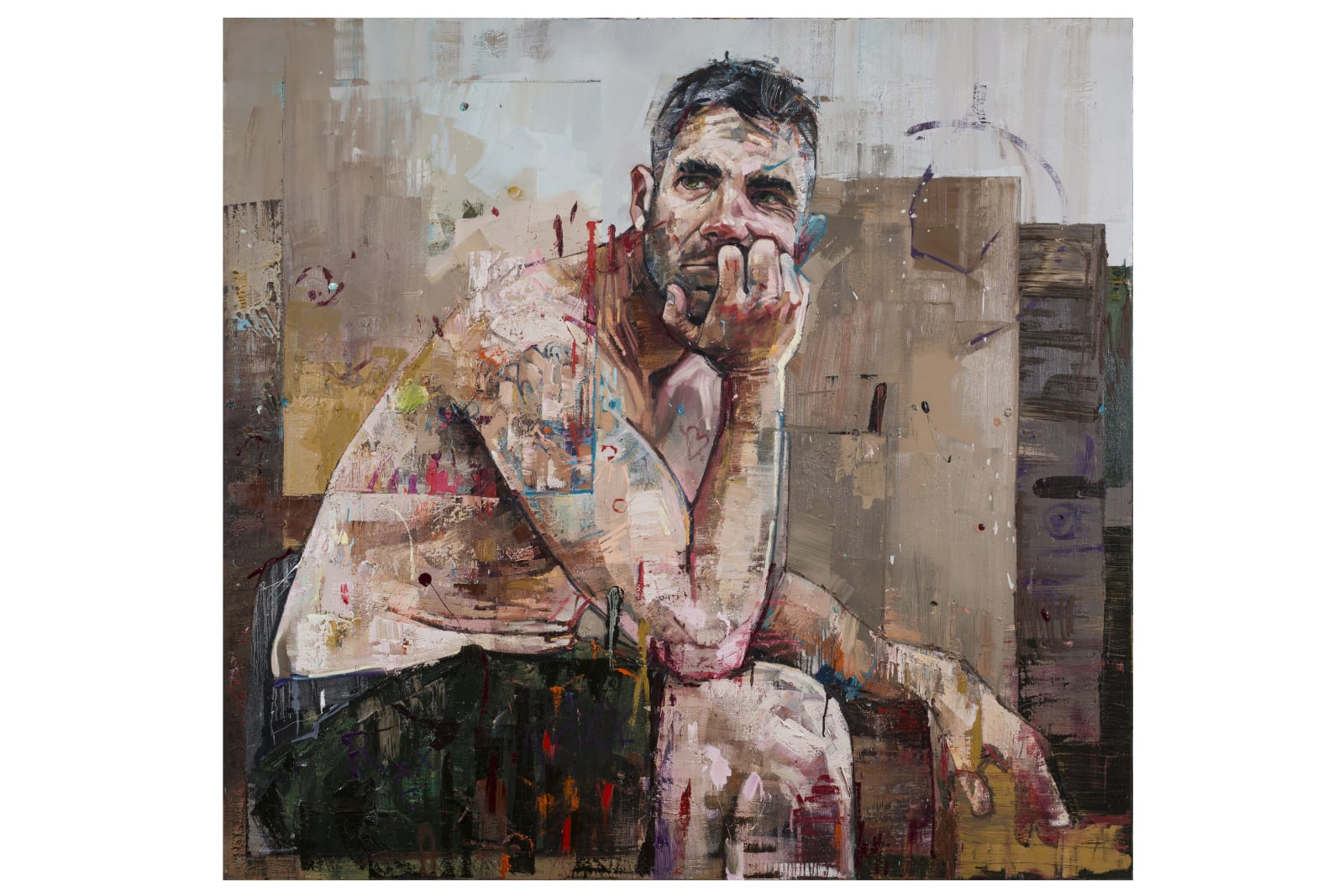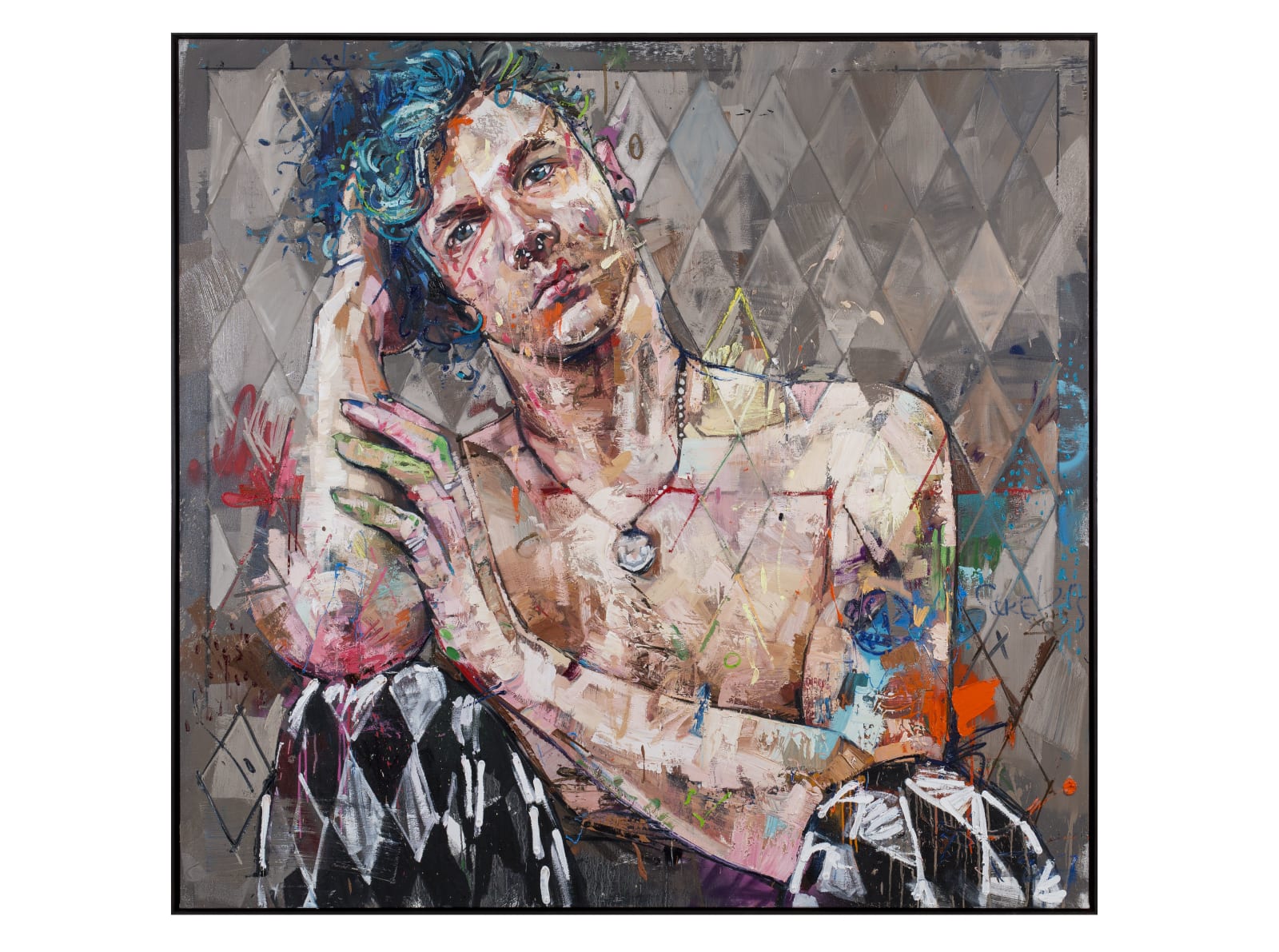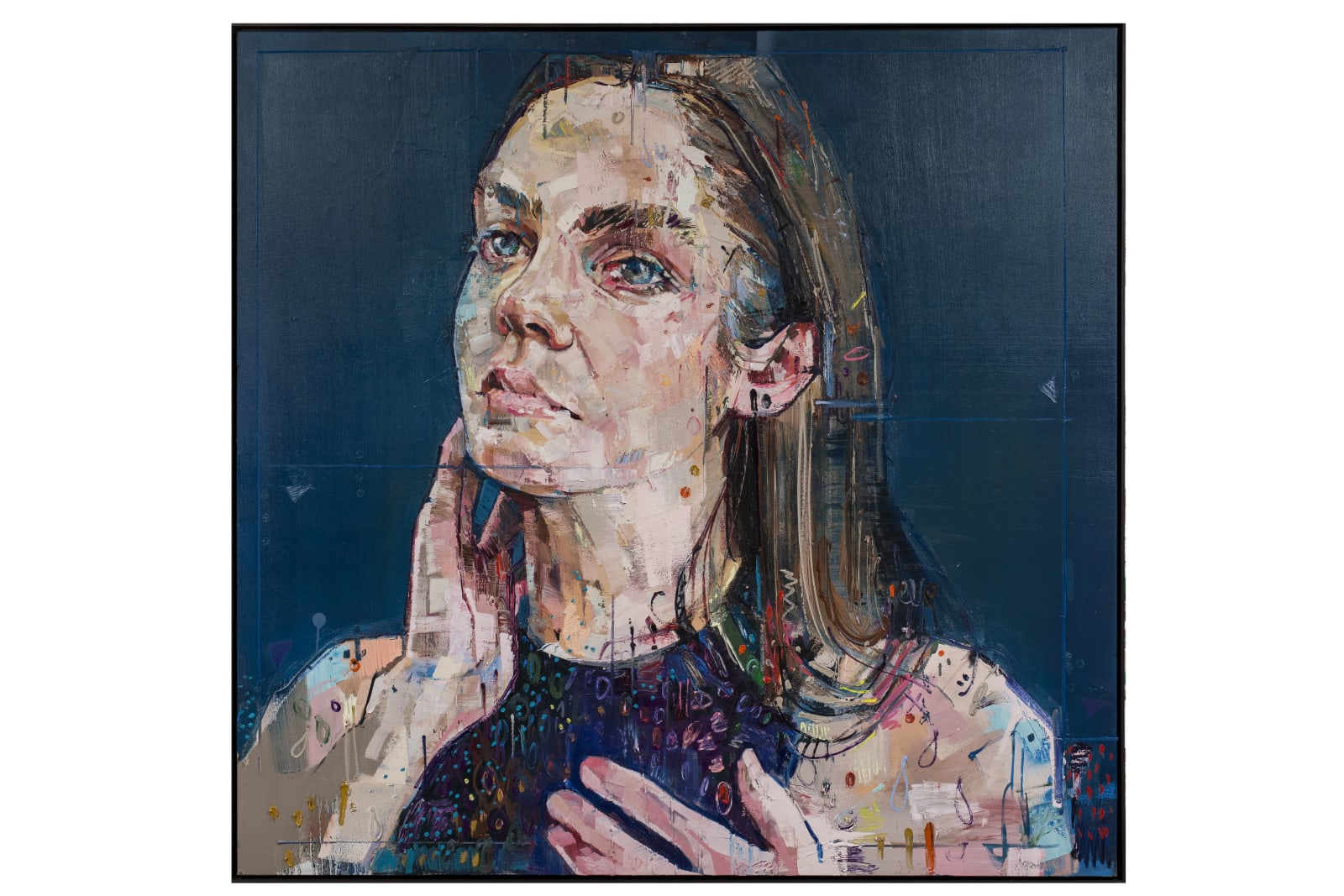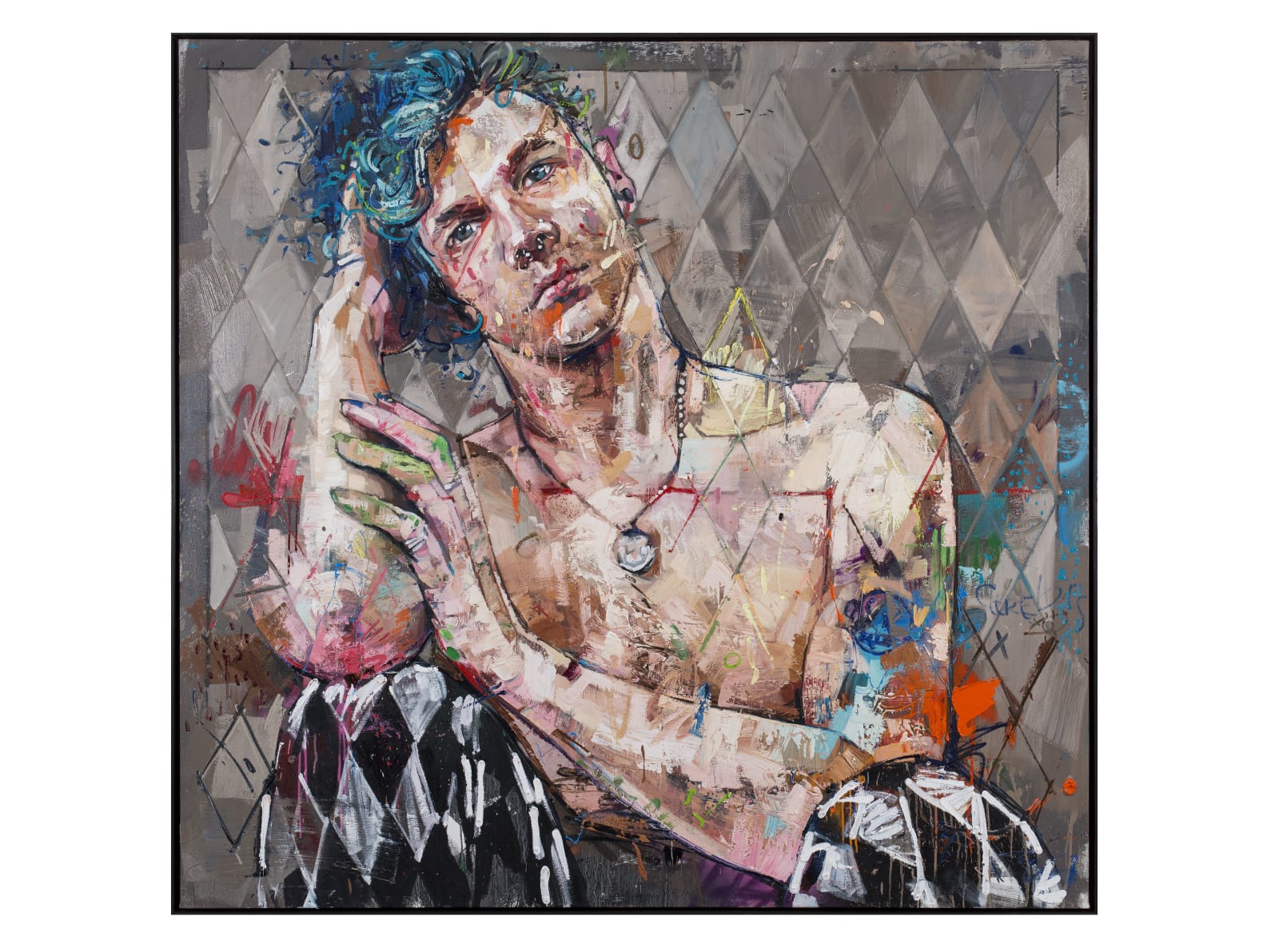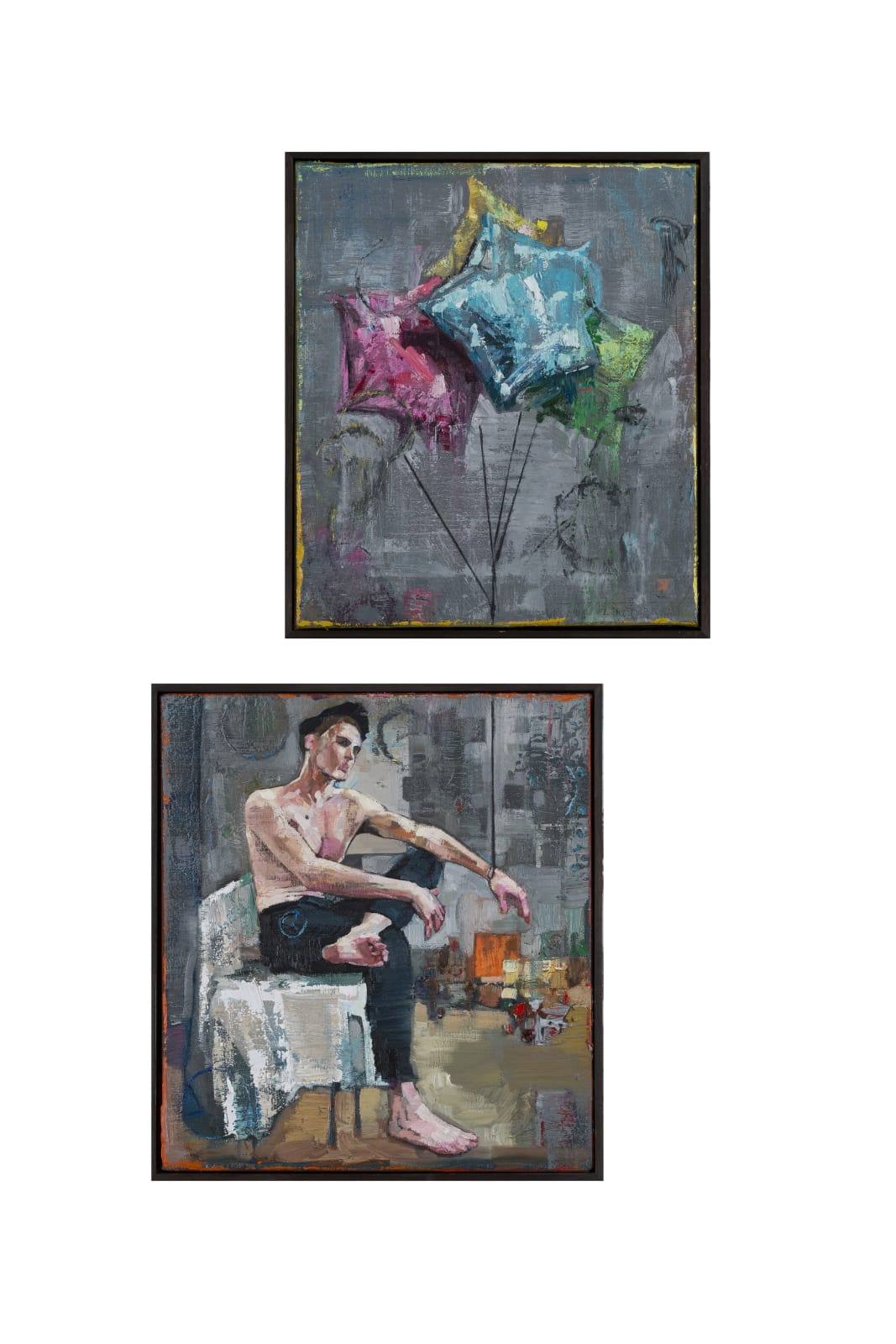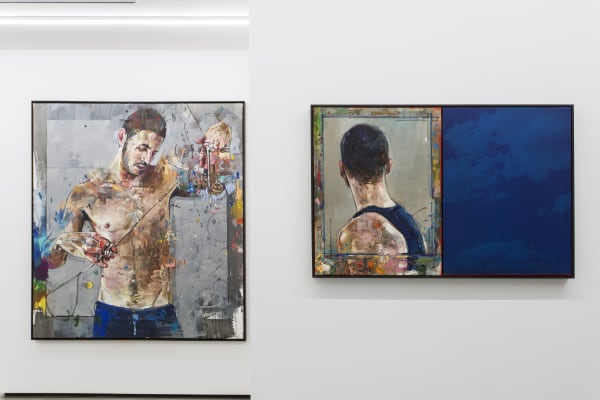ANDREW SALGADO: STORYTELLING
What counts is seeing, coupled with imagination, with fantasy – Josef Albers
BEERS London is extremely proud to present Storytelling, Andrew Salgado’s third solo exhibition at the gallery. Over the course of the past few years, Salgado has been hailed as one of the most important young painters of his generation in London and internationally, being recognised by Saatchi Online, critic Edward Lucie-Smith, international media, as well as being included in 100 Painters of Tomorrow published by Thames & Hudson, as selected by an internationally acclaimed panel of jurors. Further, Storytelling follows six consecutive sell-out solo exhibitions, including London (2012), Cape Town and New York (2013 and 2014), as well as his first museum-based exhibition in Canada (2013).
As Salgado’s much anticipated follow-up to this year’s Variations on A Theme, (May, New York City) the exhibition sees Salgado brazenly expanding upon a number of his trademark flourishes, including wild colours, bold themes, and off-kilter compositions; but also sees Salgado continuing to gain a sense of maturity, further defining his voice, and proving the young artist is wildly imaginative, eager to challenge himself, and keen to evolve with each successive exhibition.
Throughout each of the 12 paintings, we are overwhelmed by Salgado’s distinctive – but evolving – technique, which he himself describes as “somewhat schizophrenic…simultaneously sloppy and precise”. Most notable is Salgado’s irrefutable growth since his last exhibition at BEERS, (withThe Misanthrope, 2012), where his signature tightly-cropped faces have given way to allow for full figures to move freely within the painted space. It is a confidence that arises in both form, concept, and content, and Storytelling sees the young artist introducing movement and narrative into each canvas with conviction. As a result, suggestions, marks, and painted environments become as important to the paintings as the subjects that inhabit them, and while his mark-making is looser and wilder than ever, it is paradoxically more decisive and immediate. His colour story appears more sombre than previous collections, (here it is mostly limited to grey, brown, green, and blue), but still maintains Salgado’s tendency for loudness, albeit restrained, and a delicate attention to coloration particularly in relation to the varied tonalities of skin. Further, Salgado challenges a formal conceptualism through media (including spray paint, collage, mixed-media, and even screen-printing) and form: Forgotten Painting features cantilevered, stacked canvases which I assume must reference the weightiness of corporeality versus the weightlessness of fantasy (those recurring balloons suggesting the magic of the carnival, I suspect); and Gabriel / Relic, originally intended as two-parts of the same painting, sees a homage to the severed hand of St John the Baptist, which, for centuries, has attracted legions of devoted followers, and for Salgado, the hand is similarly severed and exalted. Vanishing Point, arguably the artist’s most conceptual artwork to date, references Masaccio’s famous Tribute Money fresco in Florence, in which the artist was accredited with inventing perspectival painting in two dimensional imagery in the early 15th century, and mimics (even pokes fun at) the institutional preservation of fresco paintings for modern viewing. Never before has Salgado’s studio and his physical relationship to his work and practice formed such a pivotal foundation for the execution of a painting.
Exactly what – if any – overarching story Salgado tells throughout this body remains purposely vague; as any intimate story that we, as viewers, glean from these canvases is perhaps the most telling and truthful. But we do see a trope of Classical archetypes, fictional (and fantastical) characters, and recurring motifs (some will recognise the rhombus pattern, which has shown up in Salgado’s work since 2013). It all works to suggest the artist has created a type of makeshift mythology, dreamed-up and executed in his studio and now unraveling for us here to decipher. I think it’s important to note that all the subjects (apart from one) are London based: and include the barista at Salgado’s local coffee-shop, collector and friend Ivan Massow, and other East London (un)usual suspects, embodying characters whose implications have a much greater resonance on contemporary society that what may first appear.
The only exception to the above is Bruce’s Vision, which is a starting point and metonym for the entire body of work. The painting is based on a photograph taken by a man Salgado met (and later befriended) at his exhibition in Canada (2013), who found a striking resonance in Salgado’s artworks. During their introduction, Bruce shared his personal story with Salgado: that after a period of being clinically blind, he first regained his sight, then came out as a gay man. For Salgado, Bruce’s ‘vision’ is imagined as one of reawakening, fantasy, darkness and light. As the first piece in the exhibition, the subject is imagined as a blind pauper who leads the viewer throughout the fantasy, into the metaphorical forest. Ahead, the remaining characters are worthy of Hans Christian Andersen – among them, we meet a haunted young prince; a tortured prisoner; a mute queen; an effigy of (false) worship; a fallen warrior; even the martyr. Eventually the exhibition asks us to consider mortality: Visiting Hour references Da Vinci’s Annunciation, the angel reimagined as an angelic harbinger of doom; the god Thanatos** is envisioned as a performer, a drag queen, and court jester; and the final work in the collection, Gabriel is literally a portrait of the Angel Gabriel, complete with a halo. As a story arch, the paintings loosely map the course of life, from (re)birth to death to afterlife.
However, amid such lofty metaphor, the importance is that the show reads as something poignant and compelling even without such narrative parameters (if you want to call them that). Like all of Salgado’s work it evokes true emotive reaction and commentary toward real societal issues. Salgado, the victim of a much-publicised hate-crime in 2008, stops short of calling himself an activist, but the works are inherently imbued with a political bent, despite Salgado’s attempts in the past few years to distance himself from the painfully autobiographical aspects of his earlier work. However, as Oscar Wilde once so famously stated, “The [painted subject] is merely the accident, the occasion. It is not he who is revealed by the painter; it is rather the painter who, on the coloured canvas, reveals himself.” And as such, I agree. Amid Salgado’s grand attempt to create contextual distance, the real story here is of a young painter gaining confidence in himself and his craft, like Oz working behind the veil, weaving a story much greater than the sum of its parts.
*Salgado paints exclusively from photo
**In Greek mythology, Thanatos is the demonic personification of death
Storytelling precedes forthcoming exhibitions including Warriors (Christopher Møller Art, Cape Town, January 2015); This is Not the Way to Disneyland (Blue Rider Art, Taipei, June 2015); and a solo presentation with BEERS Londonat VOLTA Basel 2015.
ANDREW SALGADO
ANDREW SALGADO (b. 1982, Regina, Canada) lives and works in London, England. He graduated with an MA in Fine Art from Chelsea College of Art and Design in 2009, and a BFA from University of BC, Vancouver, in 2005. Forthcoming solo exhibitions include: How to Build a Boat, Angell Gallery, Toronto (October 2018). Selected previous solo exhibitions include: Dirty Linen & The Nihilist’s Alphabet, Christopher Moller Gallery, Cape Town (2018), A Room with a View of the Ocean, Lauba Art House, Zagreb (2017); TEN, Gallery of the Canadian High Commission, London (2017); and The Fool Makes a Joke at Midnight, Thierry Goldberg, New York (2016). Salgado was the subject of the 2015 documentary Storytelling, and was featured in the 2014 publication 100 Painters of Tomorrow (Thames & Hudson). He has been featured widely in the press, including GQ, The Evening Standard, The Independent, Artsy, and Metro. Salgado’s solo showings with BEERS London include Storytelling, London (2014); and The Snake, London (2016). He curated the group show The Fantasy of Representation at BEERS London in 2015, and was part of the group exhibitions 75 Works on Paper (2017); O Canada! (2017); and 35 Works on Paper (2016).

